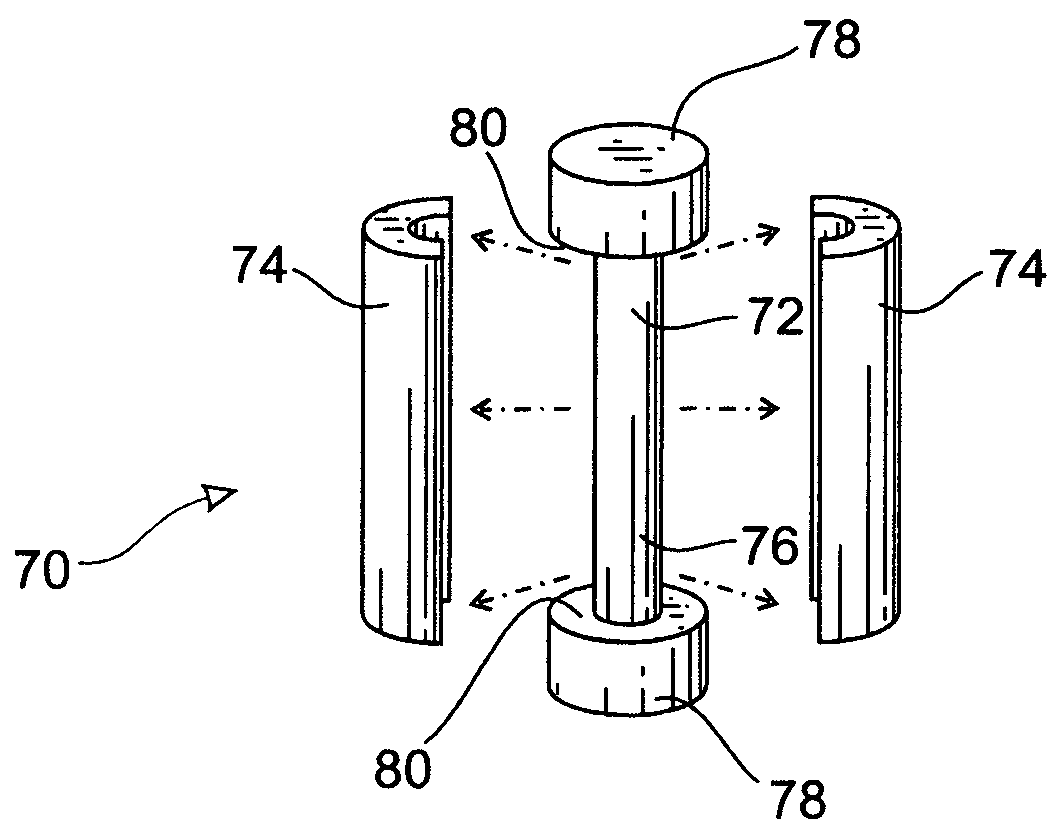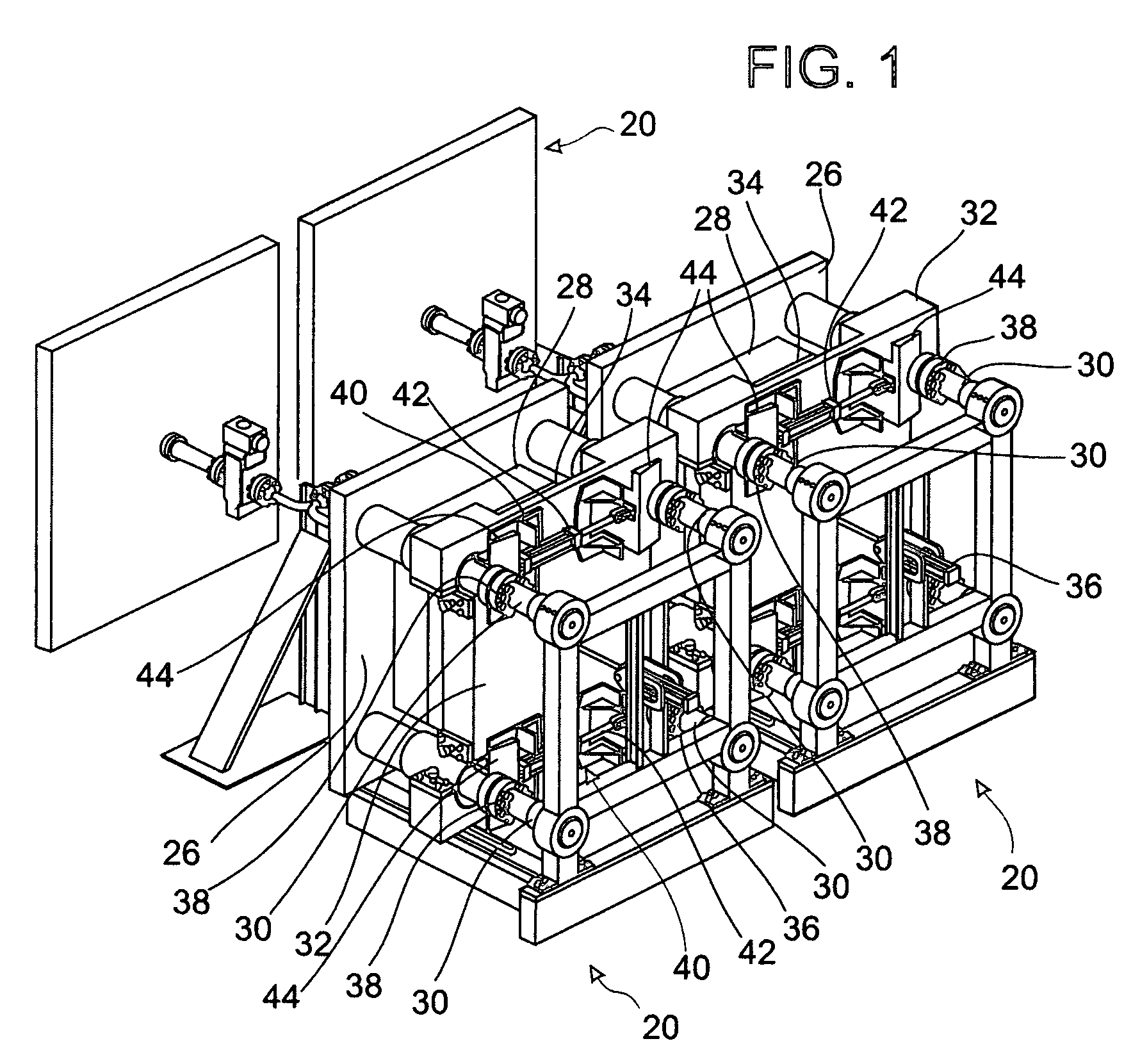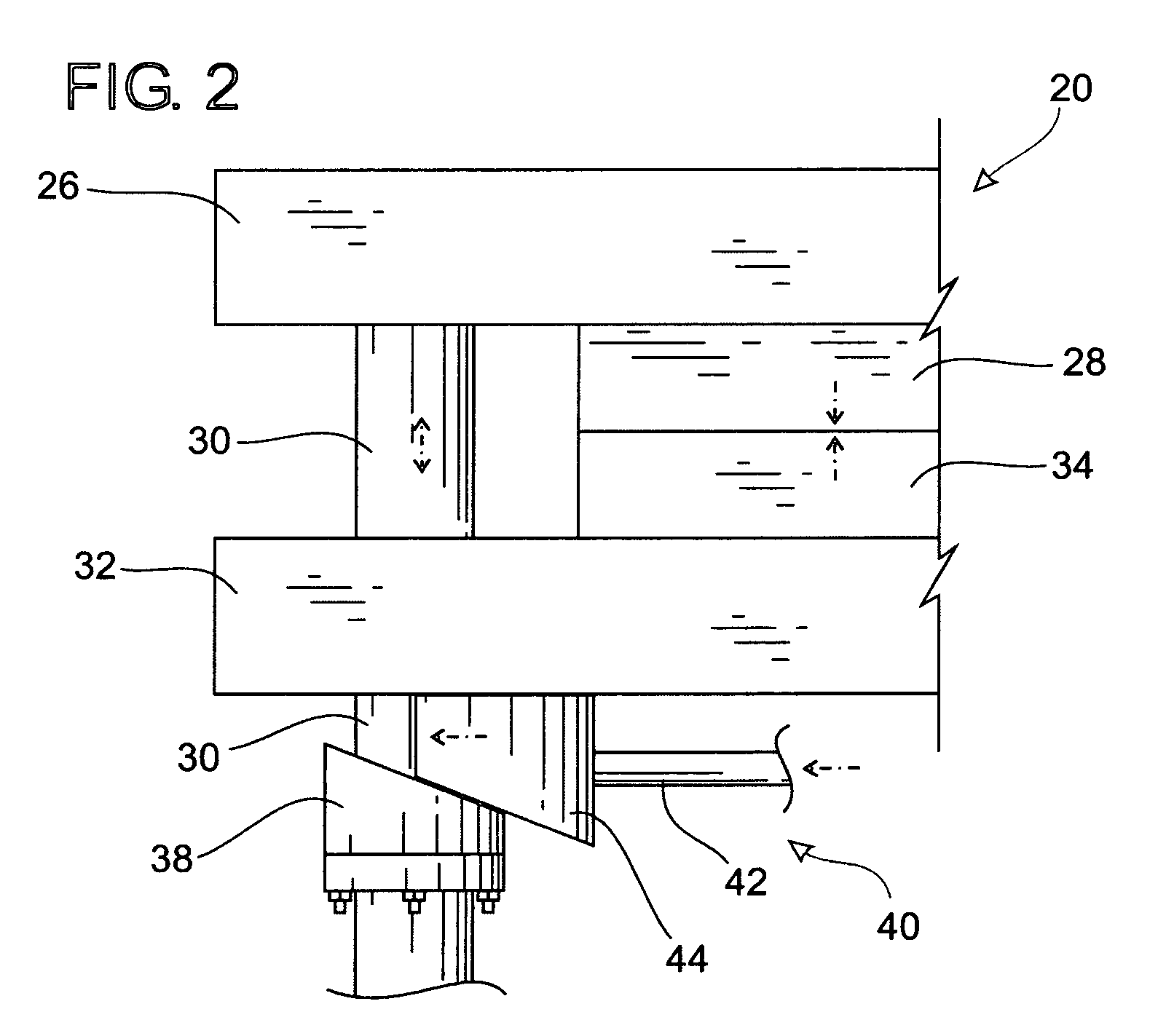Pre-stressed tie rod and method of manufacture
a technology of tensioned tie rods and manufacturing methods, which is applied in the direction of manufacturing tools, applications, press rams, etc., can solve the problems of high energy costs, short coming of direct force injection molding machines, and high energy costs for molding operations, etc., and achieves the effect of convenient us
- Summary
- Abstract
- Description
- Claims
- Application Information
AI Technical Summary
Benefits of technology
Problems solved by technology
Method used
Image
Examples
Embodiment Construction
[0037]FIG. 3 shows a top view of the preferred embodiment of the improved tie rod 70. FIG. 4 shows a cross-sectional view of the same tie rod 70 taken along the line 4—4, shown in FIG. 3. The same tie rod is shown in an exploded view in FIG. 5. The improved tie rod has a center 72, which is surrounded by an compression sleeve 74. In the preferred embodiment, the center 72 generally has a dumbbell shape, comprising an elongated tensioned core 76 connecting two bases 78. Each base 78 has a shoulder 80 located on the side of the base facing the opposing base 78.
[0038]The compression sleeve 74 in its preferred embodiment shown in FIGS. 3, 4 and 5, is constructed from two elongated semi-circular pieces, as best seen in FIG. 5. It should be noted that while the preferred embodiment of the pre-stressed tie rod 70 is shown in FIGS. 3, 4 and 5, other geometric configurations could also be used to achieve the same result and thus should be considered to fall within the scope of the present in...
PUM
| Property | Measurement | Unit |
|---|---|---|
| Length | aaaaa | aaaaa |
| Force | aaaaa | aaaaa |
Abstract
Description
Claims
Application Information
 Login to View More
Login to View More - Generate Ideas
- Intellectual Property
- Life Sciences
- Materials
- Tech Scout
- Unparalleled Data Quality
- Higher Quality Content
- 60% Fewer Hallucinations
Browse by: Latest US Patents, China's latest patents, Technical Efficacy Thesaurus, Application Domain, Technology Topic, Popular Technical Reports.
© 2025 PatSnap. All rights reserved.Legal|Privacy policy|Modern Slavery Act Transparency Statement|Sitemap|About US| Contact US: help@patsnap.com



